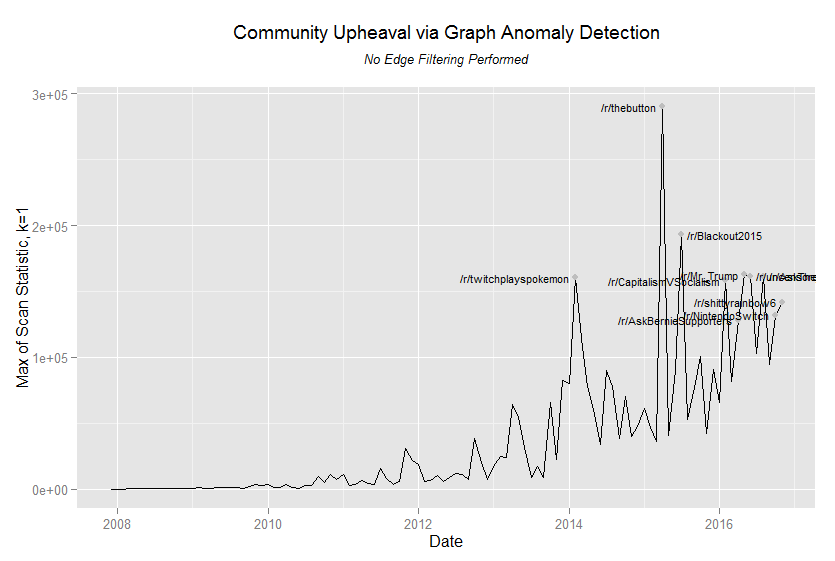

Zhang, Y., Ge, Z., Greenberg, A., Roughan, M.: Network anomography. In: 2016 IEEE 16th international conference on data mining (ICDM). Yeh, C.C.M., Zhu, Y., Ulanova, L., Begum, N., Ding, Y., Dau, H.A., Silva, D.F., Mueen, A., Keogh, E.: Matrix profile i: all pairs similarity joins for time series: a unifying view that includes motifs, discords and shapelets. IEEE Transactions on Services Computing pp. White, G., Clarke, S.: Short-term qos forecasting at the edge for reliable service applications. Wei, L., Kumar, N., Lolla, V.N., Keogh, E.J., Lonardi, S., Ratanamahatana, C.A.: Assumption-free anomaly detection in time series. Walker, M., Dovoedo, Y., Chakraborti, S., Hilton, C.: An improved boxplot for univariate data. In: The Thirty-Fourth AAAI Conference on Artificial Intelligence, AAAI 2020, pp. Vercruyssen, V., Meert, W., Davis, J.: Transfer learning for anomaly detection through localized and unsupervised instance selection. Taylor, S.J., Letham, B.: Forecasting at scale.
#Statistical anomaly series#
Shipmon, D.T., Gurevitch, J.M., Piselli, P.M., Edwards, S.T.: Time series anomaly detection detection of anomalous drops with limited features and sparse examples in noisy highly periodic data. Salinas, D., Flunkert, V., Gasthaus, J., Januschowski, T.: Deepar: probabilistic forecasting with autoregressive recurrent networks. Rosner, B.: Percentage points for a generalized ESD many-outlier procedure. In: Proceedings of the 25th ACM SIGKDD International Conference on Knowledge Discovery & Data Mining, pp. Ren, H., et al.: Time-series anomaly detection service at microsoft. Masood, A., Hashmi, A.: AIOps: predictive analytics & machine learning in operations.

In: Proceedings of the Seventh Conference on Emerging Networking Experiments and Technologies, pp.

Mahimkar, A., et al.: Rapid detection of maintenance induced changes in service performance. Lu, W., Ghorbani, A.A.: Network anomaly detection based on wavelet analysis. In: Proceedings of the 2015 Internet Measurement Conference, pp. Liu, D., Zhao, Y., Xu, H., Sun, Y., Pei, D., Luo, J., Jing, X., Feng, M.: Opprentice: towards practical and automatic anomaly detection through machine learning. In: International Conference on Machine Learning, vol. Laptev, N., Yosinski, J., Li, L.E., Smyl, S.: Time-series extreme event forecasting with neural networks at Uber. Hochenbaum, J., Vallis, O.S., Kejariwal, A.: Automatic anomaly detection in the cloud via statistical learning. Gulenko, A.: Autonomic self-healing in cloud computing platforms (2020) Gao, J., Song, X., Wen, Q., Wang, P., Sun, L., Xu, H.: RobustTAD: robust time series anomaly detection via decomposition and convolutional neural networks. IEEE (2019)ĭoersch, C.: Tutorial on variational autoencoders.
#Statistical anomaly software#
In: 2019 IEEE/ACM 41st International Conference on Software Engineering: Companion Proceedings (ICSE-Companion), pp. (CSUR) 41(3), 1–58 (2009)ĭang, Y., Lin, Q., Huang, P.: AIOps: real-world challenges and research innovations. Īndrea, K., Shevlyakov, G., Smirnov, P.: Detection of outliers with boxplots (2013)Ĭhandola, V., Banerjee, A., Kumar, V.: Anomaly detection: a survey. In: Jawahar, C.V., Li, H., Mori, G., Schindler, K. The experimental results show that the SLMAD can accurately detect anomalies on a number of benchmark data sets and Huawei production data while maintaining efficient use of resources.Īkcay, S., Atapour-Abarghouei, A., Breckon, T.P.: GANomaly: semi-supervised anomaly detection via adversarial training. Our approach consists of a three-stage pipeline including analysis of time series, dynamic grouping, and model training and evaluation. We demonstrate the integrated workflow and algorithms of our anomaly detection framework, which is designed to be accurate, efficient, unsupervised, online, robust, and generalisable. In this paper, we develop a time series anomaly detection framework called Statistical Learning-Based Metric Anomaly Detection (SLMAD) that allows for the detection of anomalies from key performance indicators (KPIs) in streaming time series data. With hundreds of metrics in a production environment, an automated approach is needed to detect anomalies and alert potential incidents in real-time. Technology companies have become increasingly data-driven, collecting and monitoring a growing list of metrics, such as response time, throughput, page views, and user engagement.


 0 kommentar(er)
0 kommentar(er)
